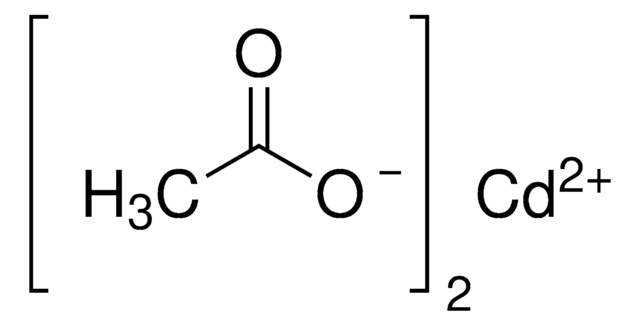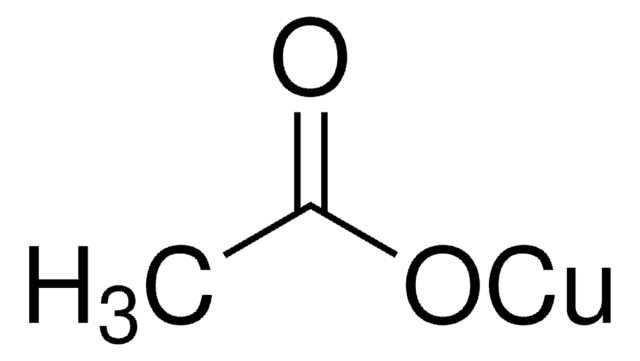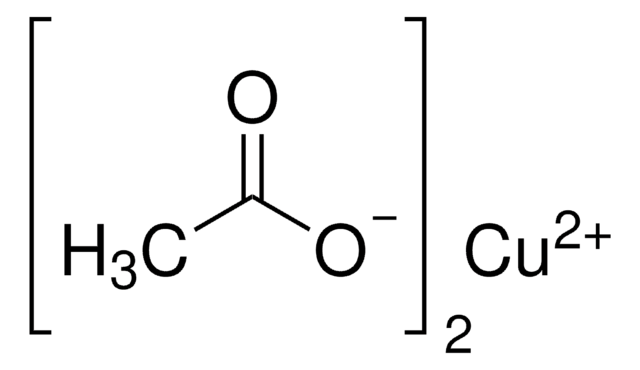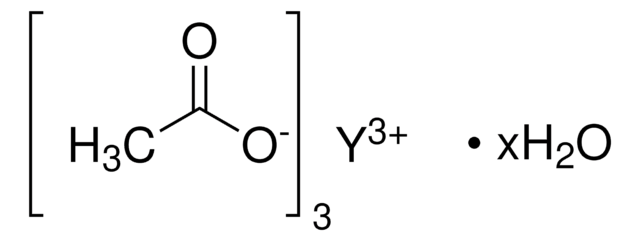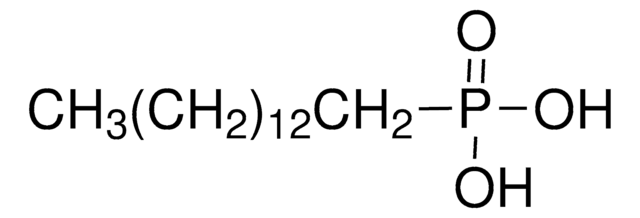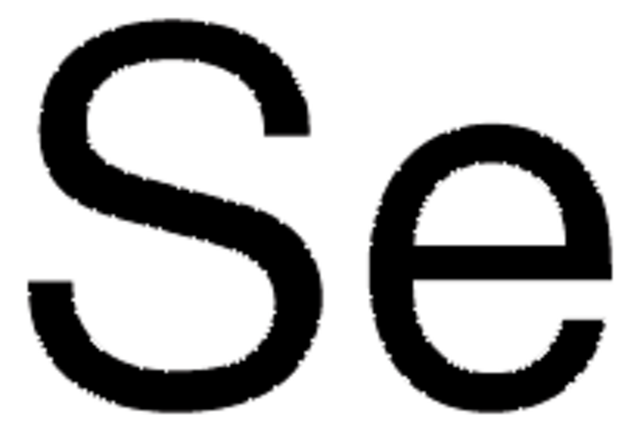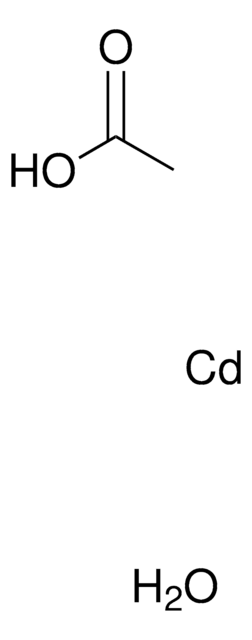229490
Cadmium acetate hydrate
≥99.99% trace metals basis
About This Item
Produits recommandés
Niveau de qualité
Essai
≥99.99% trace metals basis
Forme
powder, crystals or chunks
Composition
Degree of hydration, 1-2
Pertinence de la réaction
core: cadmium
reagent type: catalyst
Densité
2.01 g/mL at 25 °C (lit.)
Chaîne SMILES
O.CC(=O)O[Cd]OC(C)=O
InChI
1S/2C2H4O2.Cd.H2O/c2*1-2(3)4;;/h2*1H3,(H,3,4);;1H2/q;;+2;/p-2
Clé InChI
KJNYWDYNPPTGLP-UHFFFAOYSA-L
Mention d'avertissement
Warning
Mentions de danger
Conseils de prudence
Classification des risques
Acute Tox. 4 Dermal - Acute Tox. 4 Inhalation - Acute Tox. 4 Oral - Aquatic Acute 1 - Aquatic Chronic 1
Code de la classe de stockage
6.1C - Combustible acute toxic Cat.3 / toxic compounds or compounds which causing chronic effects
Classe de danger pour l'eau (WGK)
WGK 3
Équipement de protection individuelle
dust mask type N95 (US), Eyeshields, Gloves
Faites votre choix parmi les versions les plus récentes :
Déjà en possession de ce produit ?
Retrouvez la documentation relative aux produits que vous avez récemment achetés dans la Bibliothèque de documents.
Notre équipe de scientifiques dispose d'une expérience dans tous les secteurs de la recherche, notamment en sciences de la vie, science des matériaux, synthèse chimique, chromatographie, analyse et dans de nombreux autres domaines..
Contacter notre Service technique